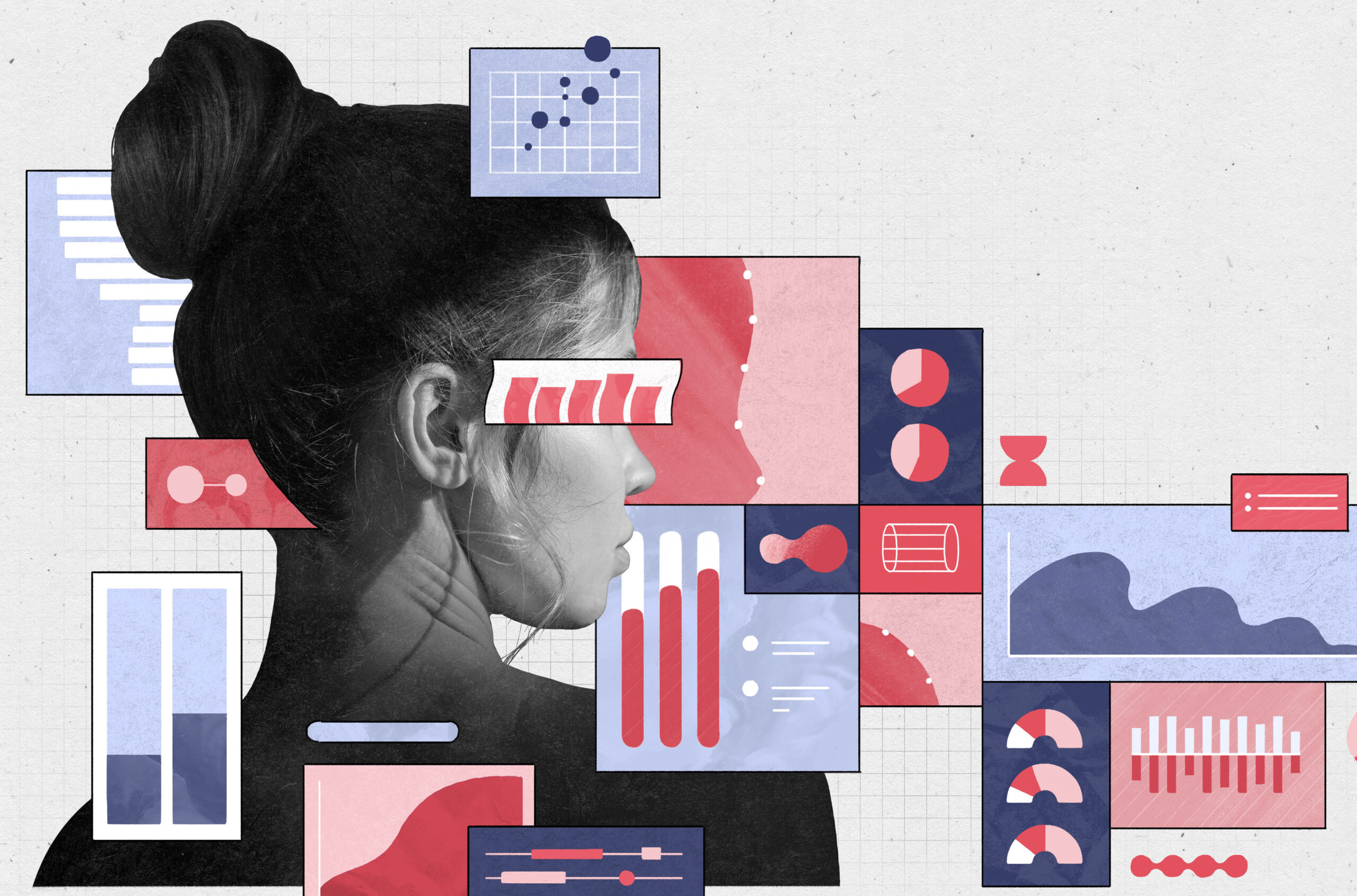Why counting matters
‘Measuring gender equity is important in order to know whether you have made any progress. Otherwise, some people may feel progress has been made while others don’t experience it,’ asserts gender equity expert.

Marika Morris did not plan on being part of the feminist movement in Canada. But one day, as a 19-year-old undergrad student at Carleton University, she had a bone to pick about employment equity. “I marched into the women’s centre all set to have an argument,” she says, laughing. “I had a very liberal view of fairness. I thought we should have a meritocracy and didn’t see the need for employment equity. The coordinator sat down with me and we talked about a whole bunch of things. In the end, I ended up volunteering at the centre.” After that, gender equality became the focus for the student who went on to become Dr. Morris. She also worked with Human Resources Development Canada (now named Employment and Social Development Canada) where she helped to develop its first gender-based analysis guide and backgrounder.
Given that she was well-versed and well-known in the community, it made sense that the editors of a new book on gender equality – Counting Matters: Policy, practice and the limits of gender equality measurement in Canada, published in April 2024 by UBC Press – reached out to Dr. Morris to contribute a chapter.
“One of the editors, Pauline Rankin, approached me. She and I had done research together on women’s leadership in Canadian public service,” says Dr. Morris.
What follows is an excerpt from Dr. Morris’ chapter, which focuses on the government of Canada’s Gender Results Framework. Introduced in the 2018 federal budget, this tool was designed to represent the government’s vision for gender equality, as well as to track how Canada is currently performing, define what is needed to achieve greater equality and determine how progress will be measured going forward.
- Tara Siebarth
Whether activists will avail themselves of the [Canadian federal government’s] Gender Results Framework (GRF) or Statistics Canada’s Gender, Diversity and Inclusion Statistics Hub remains to be seen. At the time of writing, they did not seem to be widely familiar with these resources. Statistics Canada is now attempting to better communicate its data, such as by creating infographics that can be circulated on social media to counter misinformation, though the success of this effort remains unclear. As a government agency, Statistics Canada cannot use sensationalism or policy hooks to capture attention.
There is still room to grow on intersectional data and to compare the economic and political power of gendered groups in society, which remains a hierarchy topped by white men.
In addition, people tend to discount data with which they disagree, taking their lead from Donald Trump by attacking the data source as lacking in credibility. Thus, any data that make a case for gender equality may be dismissed as having been manipulated by the Trudeau government.
Canadians need to understand how Statistics Canada collects its data, what shapes the questions it asks, how the data are interpreted, how they can be used, and how people can participate in Statistics Canada consultations about what information to collect. Given the increasing role of quantitative data and the level of confusion and misinformation about them, the elementary and secondary school curriculums should cover how they are gathered, how they can be manipulated, what they mean and do not mean, and where people can find reliable sources of them. The value of qualitative data, including oral history, should also be taught and explored. Such data can provide the human stories, the depth, and the explanations for why things are as they are. They are also a starting point for further quantitative, qualitative, and documentary investigation.
Throughout my lifetime, feminist activists have used Statistics Canada data on violence against women and the gap between women and men’s earnings to support their advocacy. Much of these data were written up in a Statistics Canada publication titled Women in Canada: A Gender-based Statistical Report, which is issued about every five years. However, each chapter was written by a different author or authors, who chose to highlight differing statistical tables, which meant that there was no comparable way to list, for example, total average income of Canadian men as a whole, Canadian women as a whole, women and men living with a disability, Indigenous women and men, and racialized women and men. One chapter could examine earnings (which are just one form of income), another might even narrow that down to earnings of the core working age population (25 to 54), and another could use after-tax income. Different measures cannot be compared. With greater access to actual data tables, equality-seeking Canadians could potentially locate comparable data for various groups, although truly intersectional data are still hard to come by. There is still room to grow on intersectional data and to compare the economic and political power of gendered groups in society, which remains a hierarchy topped by white men. These data are important in an era of misinformation in which some white men feel threatened, marginalized, and powerless. I am not arguing that Statistics Canada or the GRF are perfect, but I do suggest that progress has been made on developing national gender equality indicators for Canada and that they provide some useful, albeit quite imperfect, tools for change.
We need to remain vigilant about how quantitative data are collected and by whom and about what questions are asked. We need also to learn how best to use quantitative data to measure and contribute to social change.
A recent example illustrates this point: For several years, I have delivered presentations both in Japan and online for Japanese public officials and academics on how Canada collects quantitative data that can be used for policy development. The focus has been on gendered data for disaster management planning, but when the COVID-19 pandemic arose, it changed to the gendered and intersectional effects of the pandemic in Canada. Statistics Canada pivoted to produce mainly gender-disaggregated data about the effects of COVID-19 on various groups, including parents, persons with disabilities, seniors, children, Indigenous people, racialized Canadians, lesbian, gay, bisexual, transgender, queer, questioning, and two-spirit Canadians, and female and racialized small business owners. In addition, activists, the media, and local and provincial/territorial public health bodies provided qualitative and quantitative data about the effects of the pandemic. Although COVID-19 is the most wide-reaching pandemic in a hundred years, it will not be the last. If policy is not changed, the next pandemic is likely to hit the same groups in the same ways. The effects of any policy changes will be directly measurable by comparing the gendered intersectional effects of the next pandemic to this one. Measuring policy change is incredibly difficult because there are so many local, regional, national, and international variables. In the case of pandemics, the collection of gendered intersectional data can show whether a country, region, or local area has made progress or has regressed on equity policy issues.
In short, we need to remain vigilant about how quantitative data are collected and by whom, and about what questions are asked. We need also to learn how best to use quantitative data to measure and contribute to social change. The GRF is an imperfect but nonetheless useful tool, but unless voters know and care about it and its implications, it will not be enough. I argue that social movements can effect real and lasting change by moving the population, not simply the government, toward their goals. This requires outreach that connects with people where they live. Quantitative tools such as the GRF and international reports can be used in conjunction with personal stories, qualitative data, and an articulated vision of how a better world would work.
Featured Jobs
- Science - Assistant Professor (Teaching)The University of British Columbia
- Canadian Politics - Assistant ProfessorUniversity of Toronto
- Political Science - Assistant Professor (Political Theory)Saint Mary's University
- Psychology - Assistant Professor (Clinical Psychology)Queen's University
- Chaire de recherche du Canada, niveau 2 sur l'inclusion dans l'éducation de la petite enfanceUniversité du Québec à Trois-Rivières (UQTR)















Post a comment
University Affairs moderates all comments according to the following guidelines. If approved, comments generally appear within one business day. We may republish particularly insightful remarks in our print edition or elsewhere.